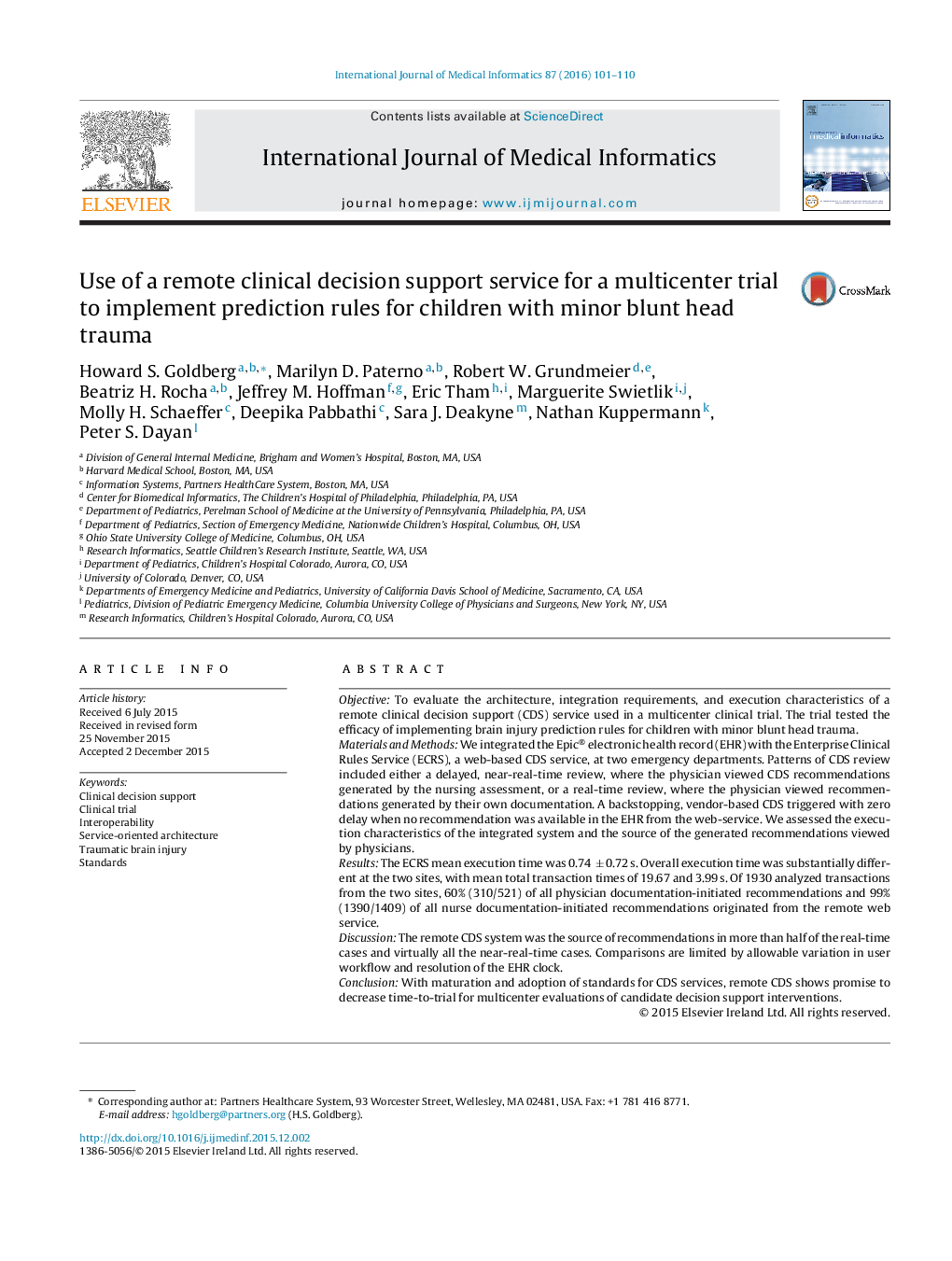| Article ID | Journal | Published Year | Pages | File Type |
|---|---|---|---|---|
| 516710 | International Journal of Medical Informatics | 2016 | 10 Pages |
•We describe use of CDS services in a trial of blunt head trauma prediction rules.•We evaluate the execution characteristics of the system at two emergency departments.•The CDS service was the source of recommendations in 60% of real-time workflows.•The CDS service was the source of recommendations in all near-real-time workflows.•Evolving CDS services facilitate sharing of CDS in selected clinical settings.
ObjectiveTo evaluate the architecture, integration requirements, and execution characteristics of a remote clinical decision support (CDS) service used in a multicenter clinical trial. The trial tested the efficacy of implementing brain injury prediction rules for children with minor blunt head trauma.Materials and MethodsWe integrated the Epic® electronic health record (EHR) with the Enterprise Clinical Rules Service (ECRS), a web-based CDS service, at two emergency departments. Patterns of CDS review included either a delayed, near-real-time review, where the physician viewed CDS recommendations generated by the nursing assessment, or a real-time review, where the physician viewed recommendations generated by their own documentation. A backstopping, vendor-based CDS triggered with zero delay when no recommendation was available in the EHR from the web-service. We assessed the execution characteristics of the integrated system and the source of the generated recommendations viewed by physicians.ResultsThe ECRS mean execution time was 0.74 ± 0.72 s. Overall execution time was substantially different at the two sites, with mean total transaction times of 19.67 and 3.99 s. Of 1930 analyzed transactions from the two sites, 60% (310/521) of all physician documentation-initiated recommendations and 99% (1390/1409) of all nurse documentation-initiated recommendations originated from the remote web service.DiscussionThe remote CDS system was the source of recommendations in more than half of the real-time cases and virtually all the near-real-time cases. Comparisons are limited by allowable variation in user workflow and resolution of the EHR clock.ConclusionWith maturation and adoption of standards for CDS services, remote CDS shows promise to decrease time-to-trial for multicenter evaluations of candidate decision support interventions.
